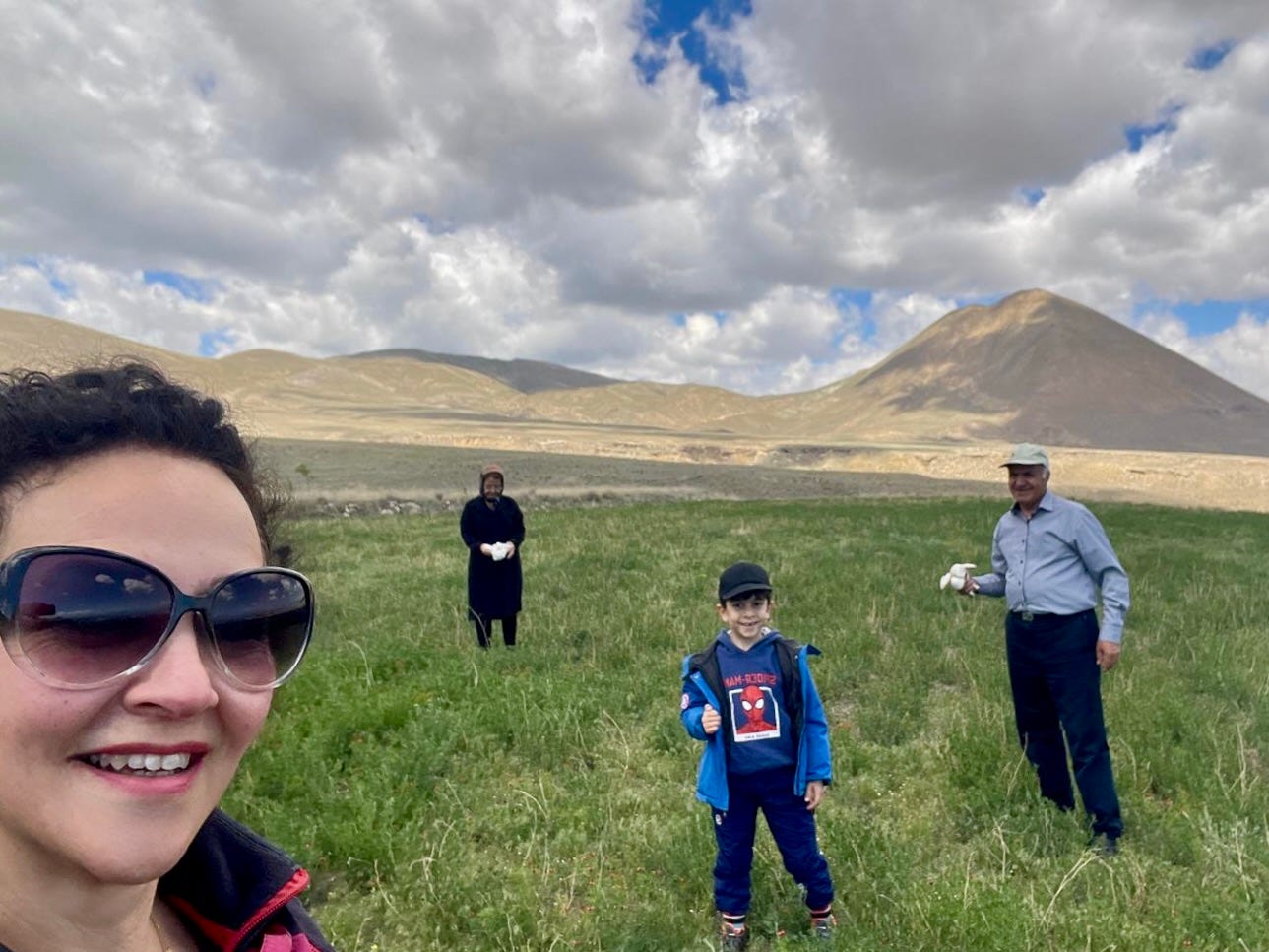
I was invited to a village in the remote mountains of northern Azerbaijan in Iran. On a glorious Friday, we set off from Tabriz.
On arrival we were offered chai, cakes and biscuits. The biscuits were red and tractor shaped made in honour of Traxtor, our local football team who had just been crowned champions.
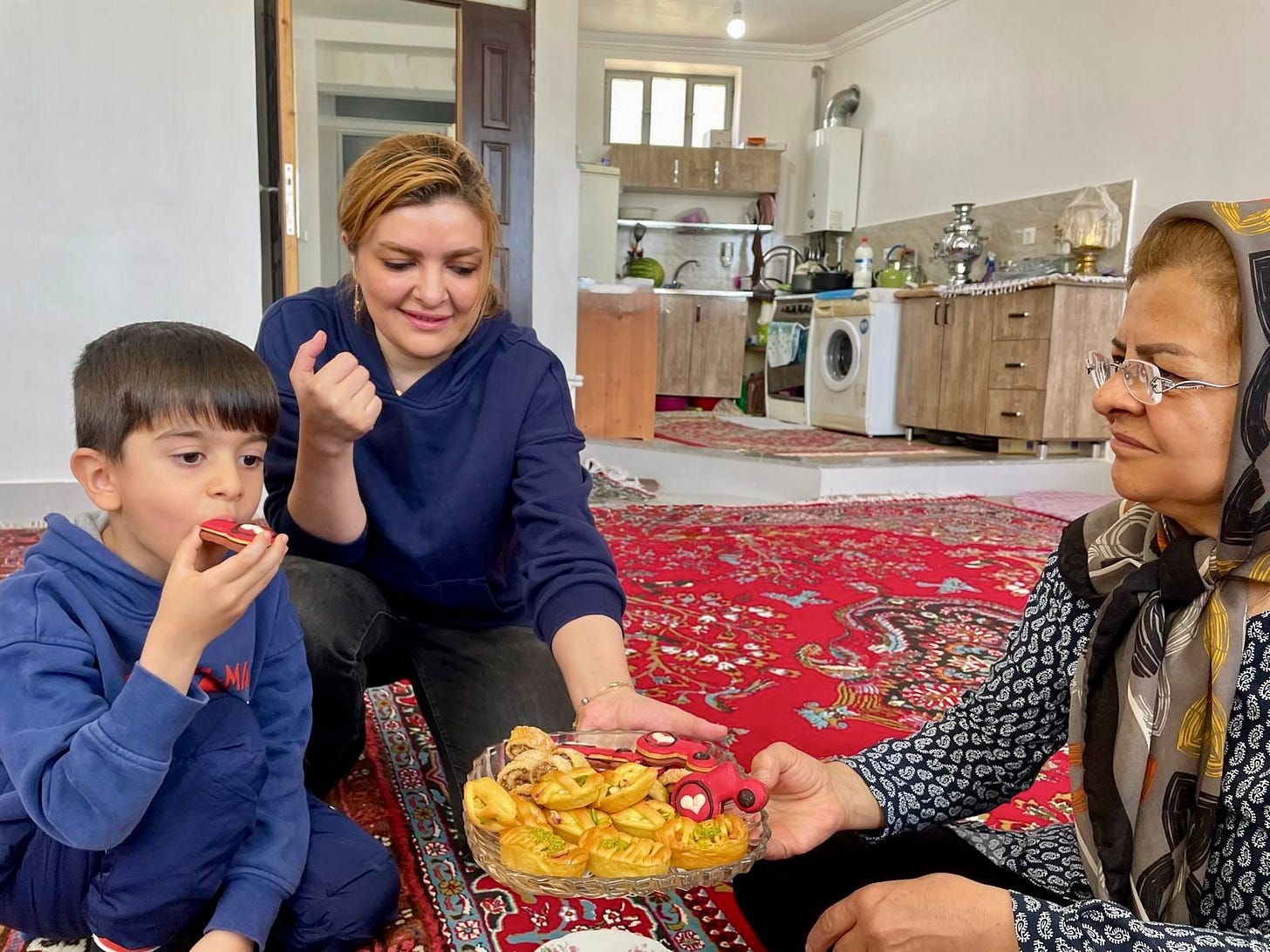
After tea, we went to search for jobalayeh, or mushrooms. It had rained heavily the day before, so they expected to find plenty. They searched in just one spot: the foothills of Booghda Doghi (Wheat Mountain). They said they only eat mushrooms that grow in that particular area. I was told they never eat any mushrooms that grow under or near trees.
A few weeks ago, I had bought some in Maragheh, but when I told any of our friends or relatives, they all told me to throw them away. They said it wasn’t worth the risk, quoting people they knew who had become paralyzed or died as a result of eating mushrooms. I looked into it and found that many kinds of mushrooms grow in the area, including the death cap mushrooms!
Grandmother, grandfather, and little Orhan pulled back the spring vegetation to reveal white mushrooms. When they found one, they held it up high with great glee.
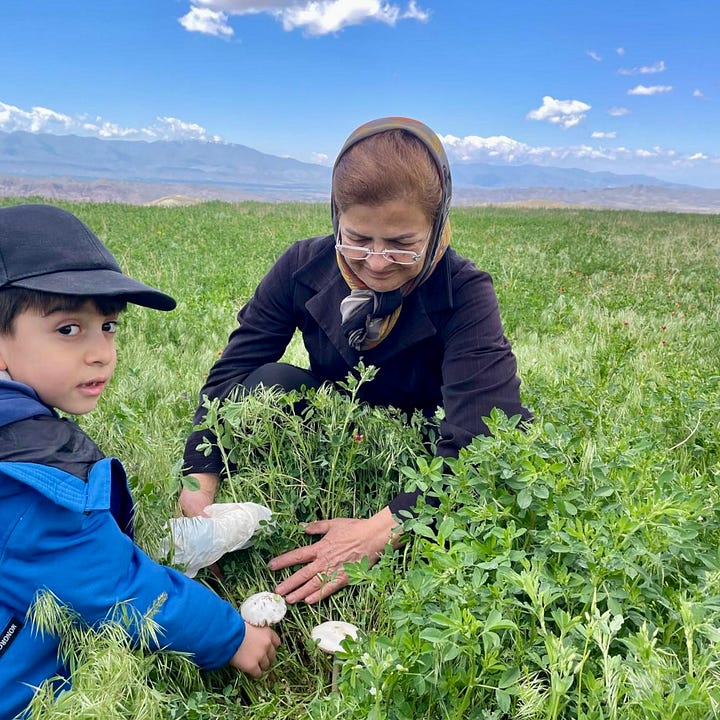

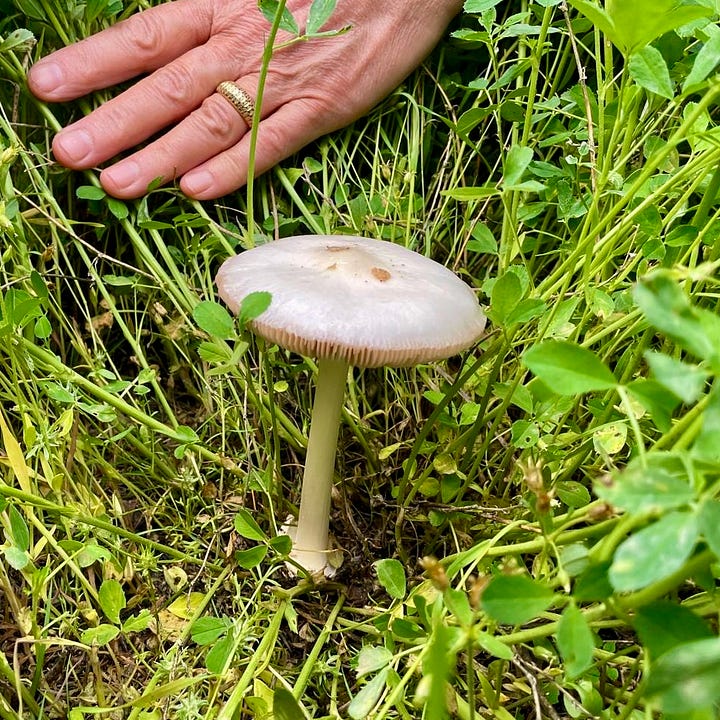
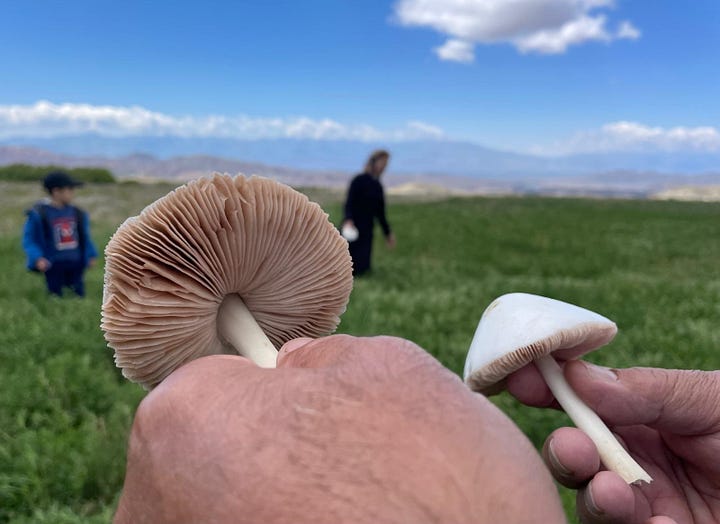
We then wandered around their bogh, where they grow different fruits but mainly apricots and walnuts. The place was buzzing with life, there were wild probably species poppy, nepeta, henbane, achillea, centaurea and campanula persicifolia, to name a few. All were shorter versions of the genetically modified tall plants we have in the West.
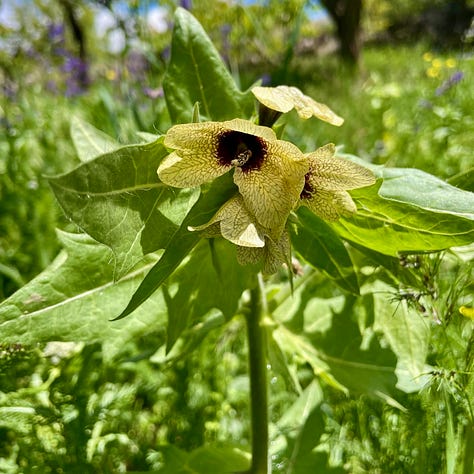
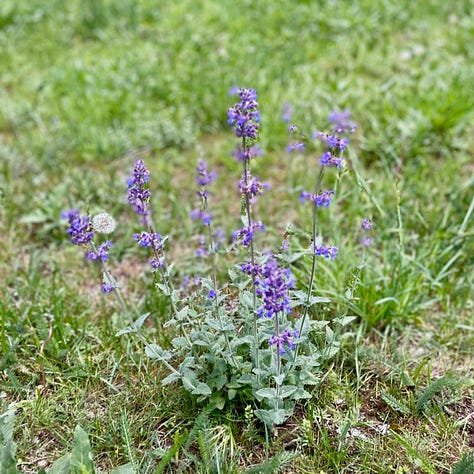

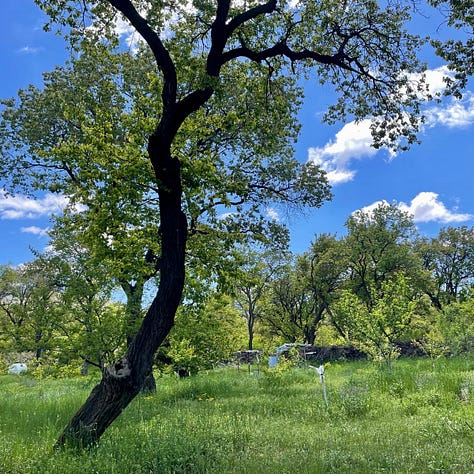

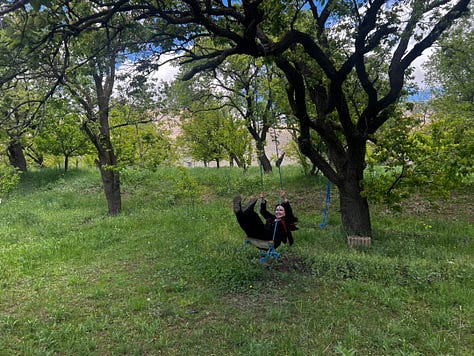
I even had a go on the swing suspended from a walnut tree. Orhan and I collected apricot tree sap, which we call tichirja, the original gummy to eat.
The fruit from their trees were smaller than ones I know from our boghs. I was told they were indigenous varieties not found elsewhere. When the apricots ripen, around July, the whole village gets to work drying apricots or making gākh. Some are sun-dried for personal use, while others are halved, the stones removed, and dried with sulphur, or joojut, as we say, for sale.
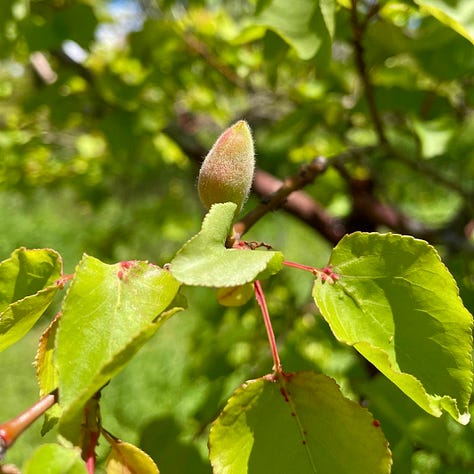
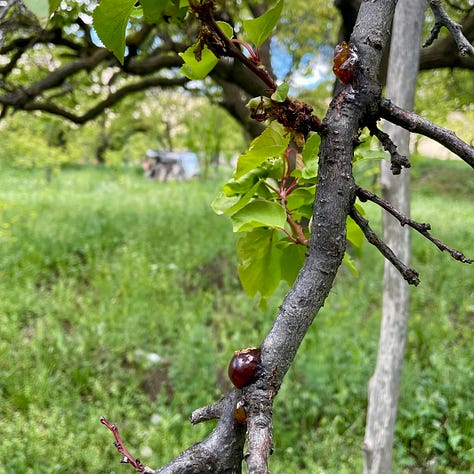
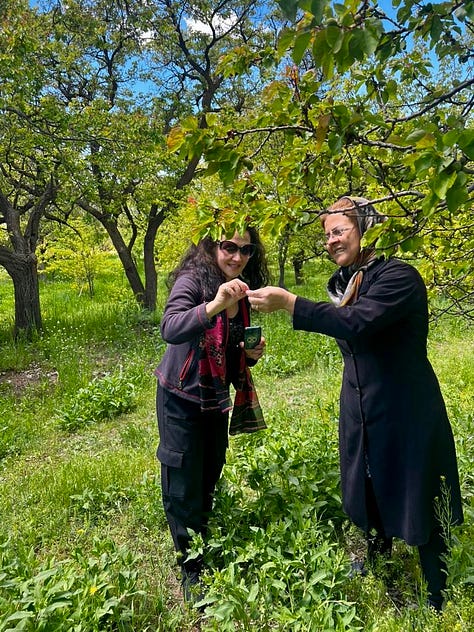
Razieyeh Khanum fried the mushrooms they’d collected in ghee to accompany a delicious lunch she had already prepared: soup, toyukh pilow (chicken and rice with carrots), salad, yoghurt, and her famous homemade rose petal jam in two colours, one made from local yellow wild roses, the other from Mohammadi roses from Jolfa.
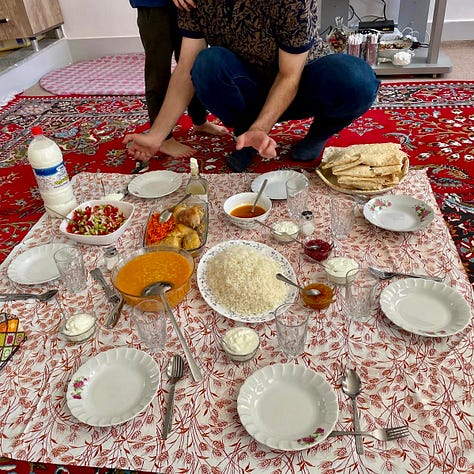
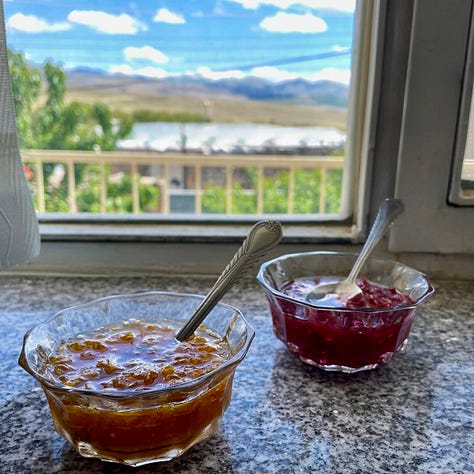
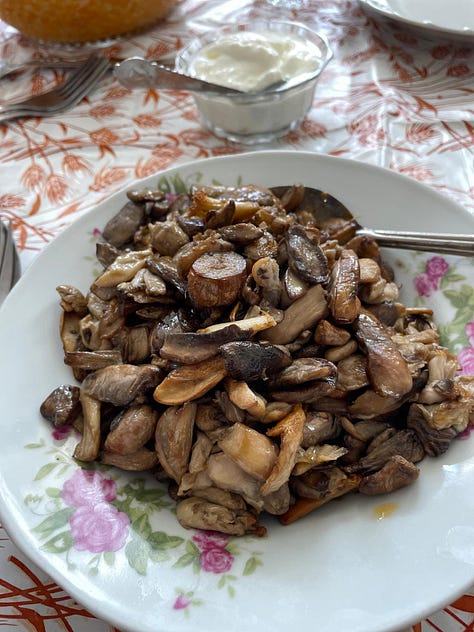
After lunch whilst Orhan and I played football in the garden they set up a coal fired samovar on the balcony to brew chai. We enjoyed it with sweets, nuts and spectacular mountain views.
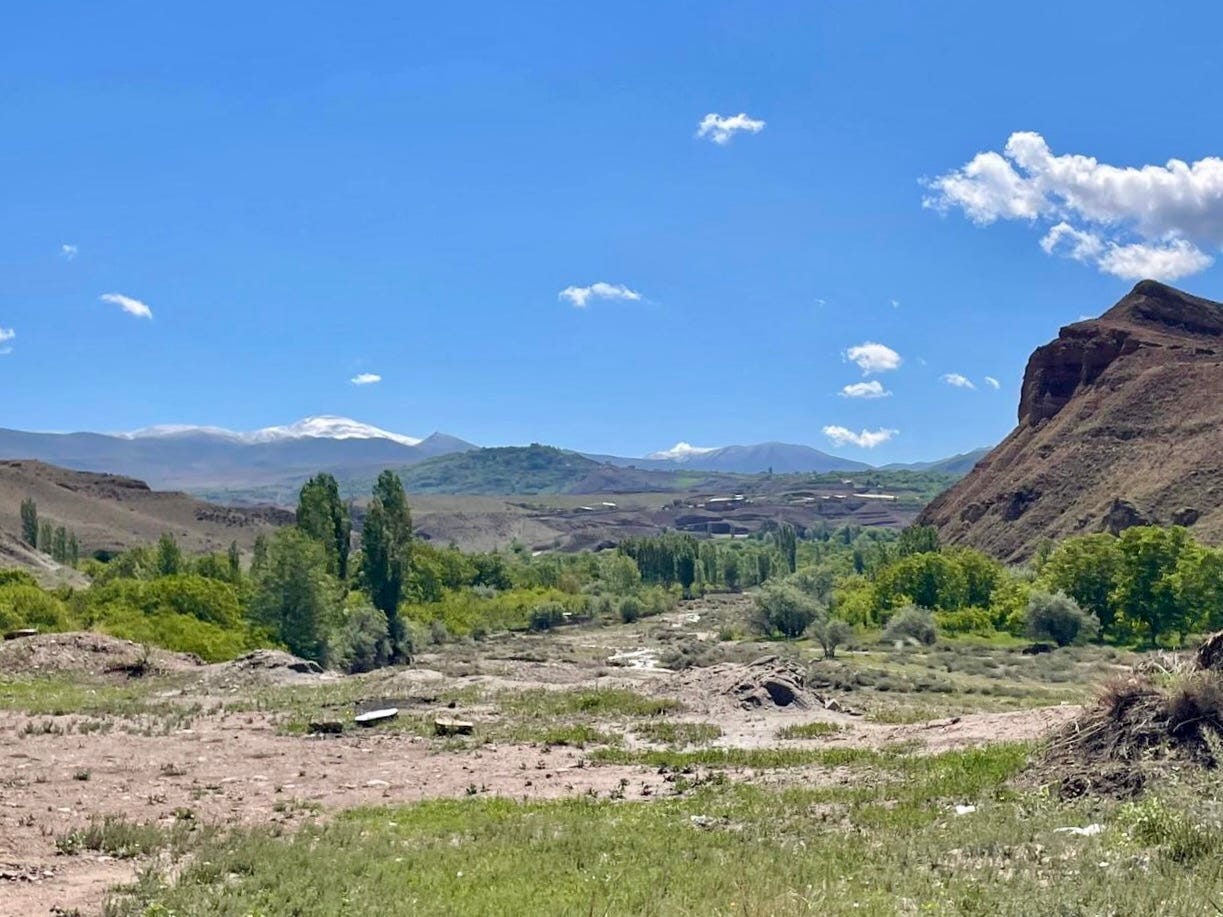
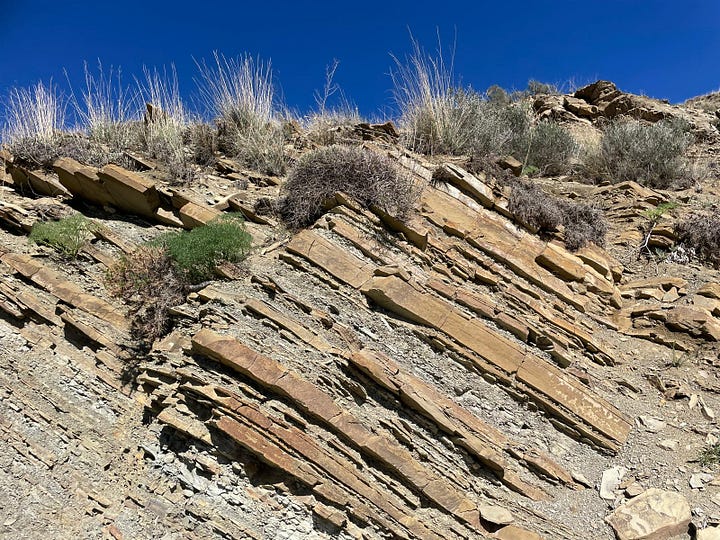
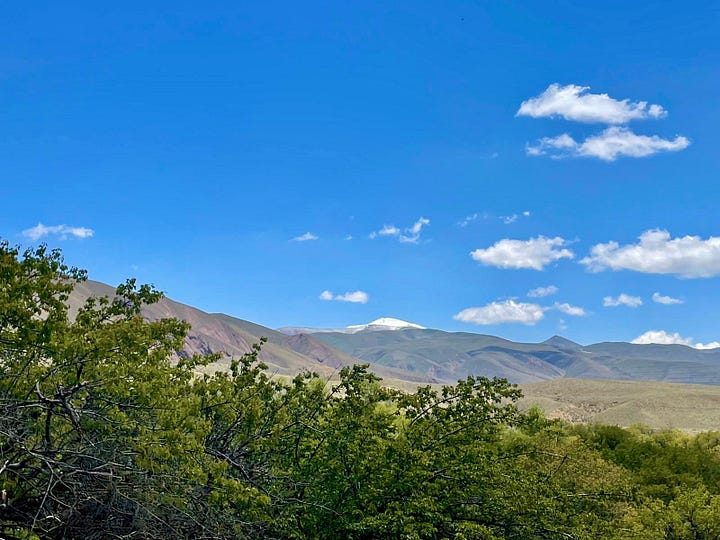
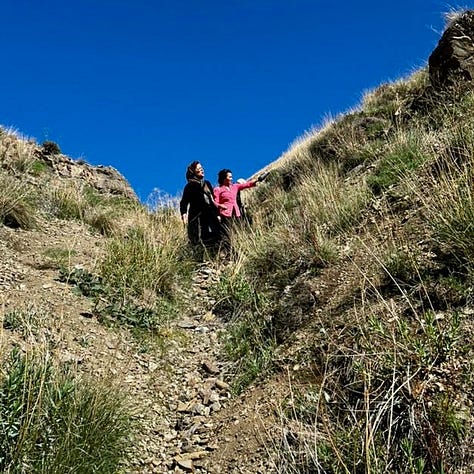
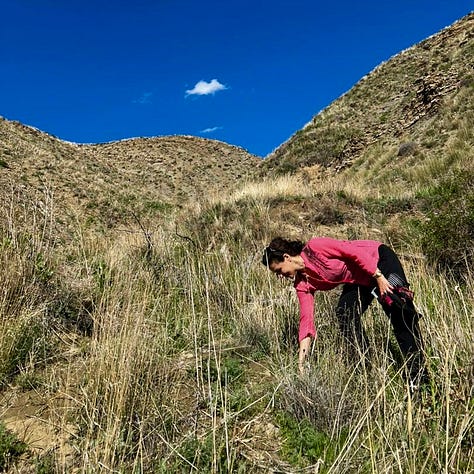

At 3 we went off in search of mountain herbs, particularly piovar, a local wild allium that is only available at this time of year. We disturbed sand coloured well camouflaged partridges, and passed areas of land that had been flattened on the mountainside and prepared for sowing barley. We also saw fields of tall rye that had been planted in the autumn. Both of these crops were grown as fodder in times past. These fields are not irrigated; they rely solely on rainwater, which we call daiymi (dryland farming).
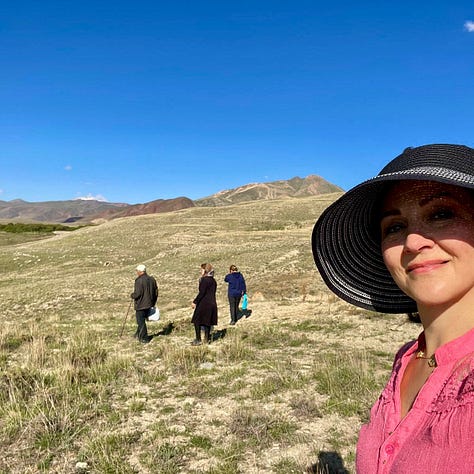
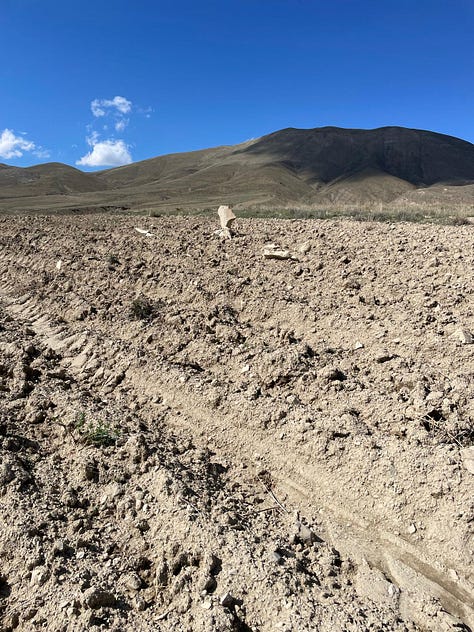
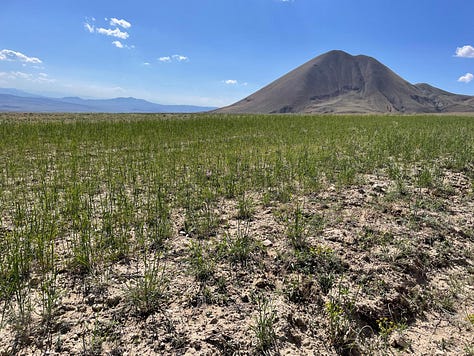
We found many different edible, medicinal and useful plants such as Stachys lavandulifolia Vahl and piovar. The mountainsides were pink with blooming Cytisus, or broom called javan. This plant is not only a nitrogen fixer, but I was told it is also collected for fuel. I was over the moon to find Rumex scutatus which I know as buckler sorrel which I grow on my allotment. They knew it as turshija (sour thing).
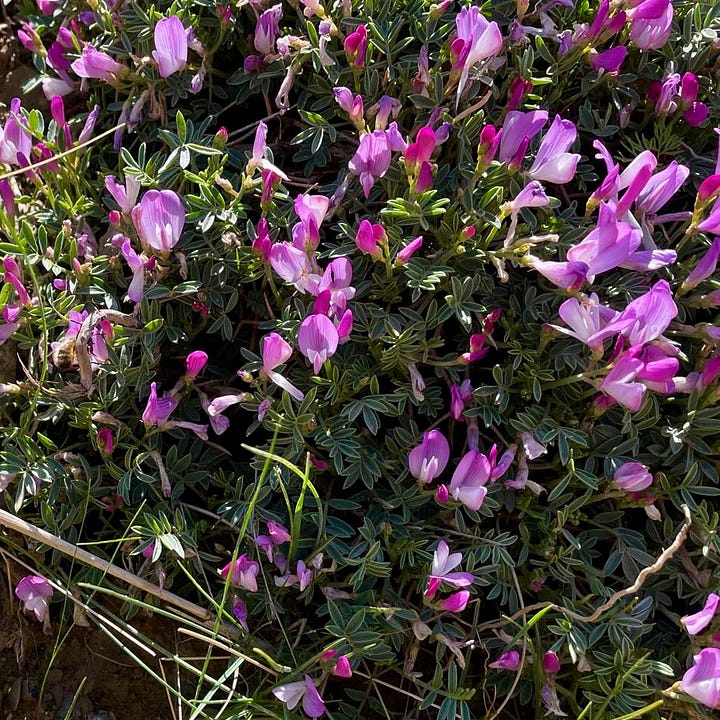
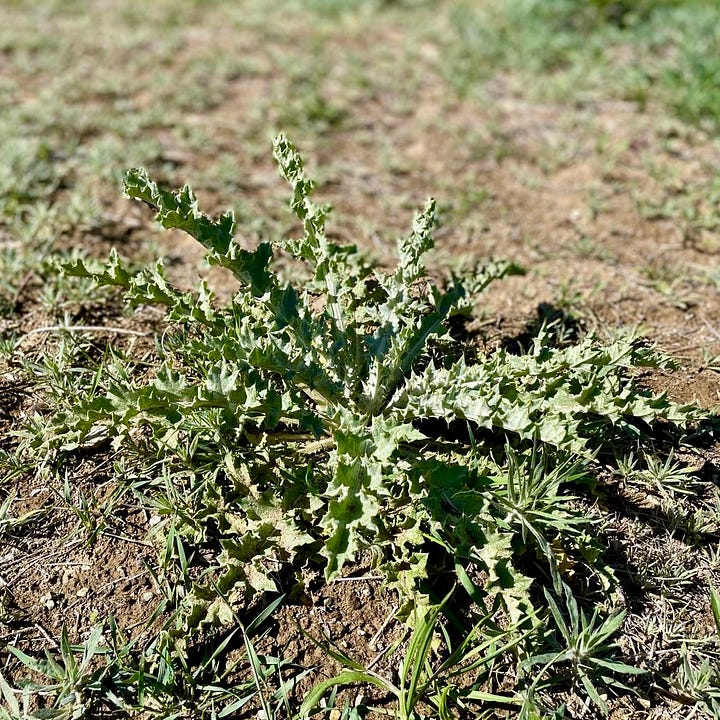
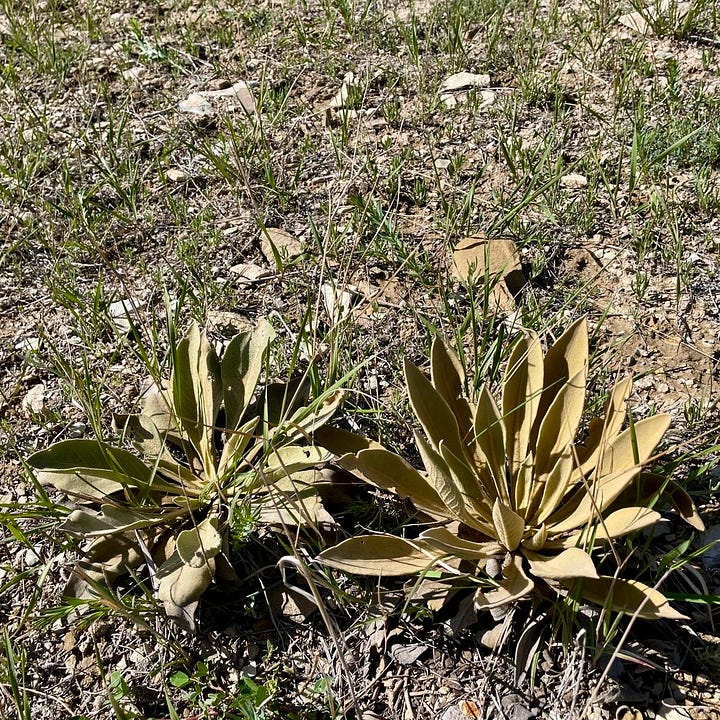
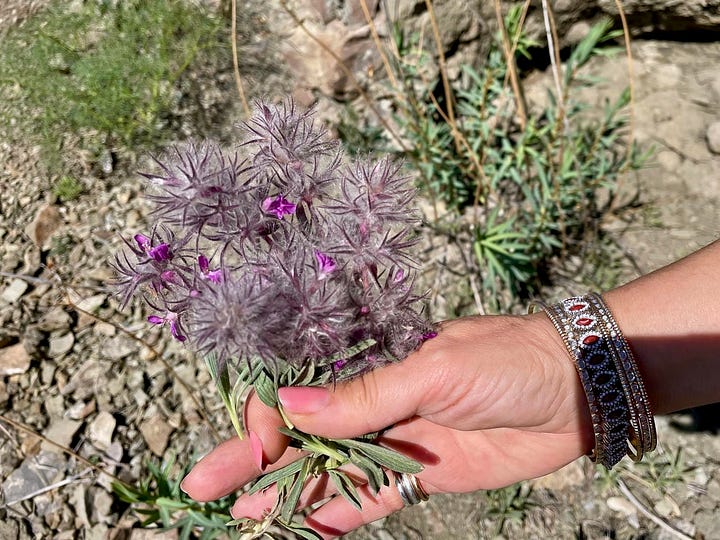
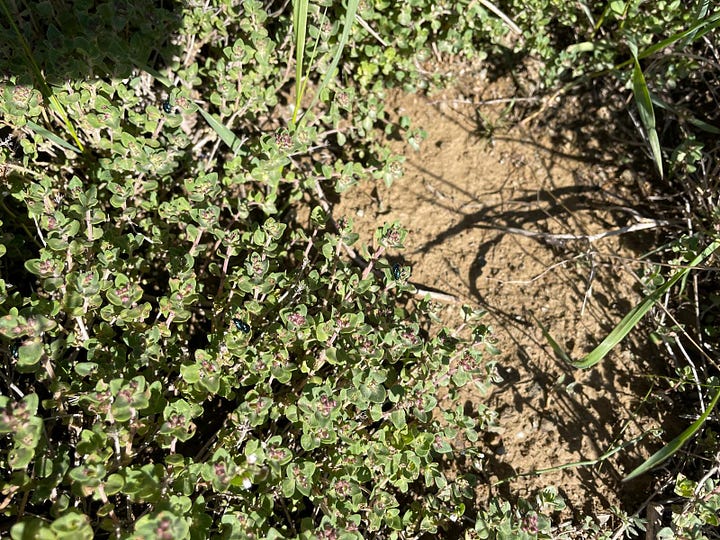
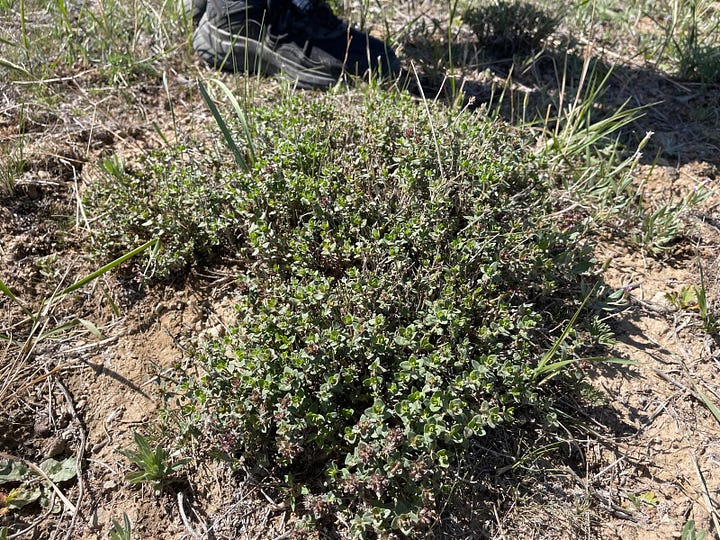
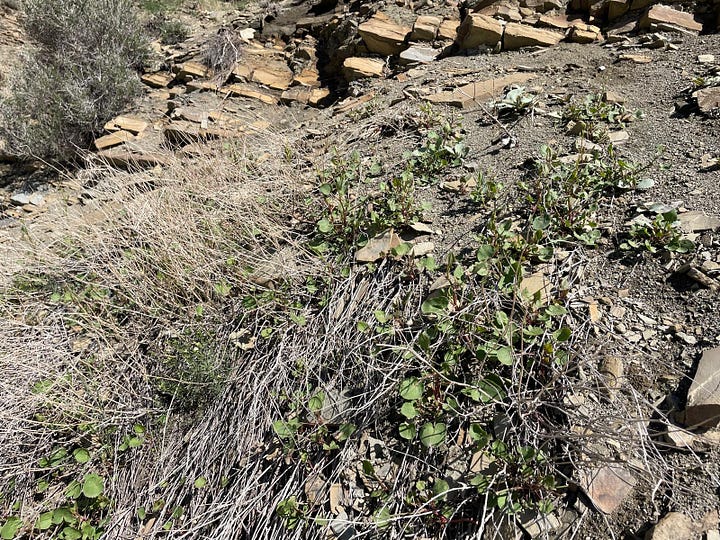
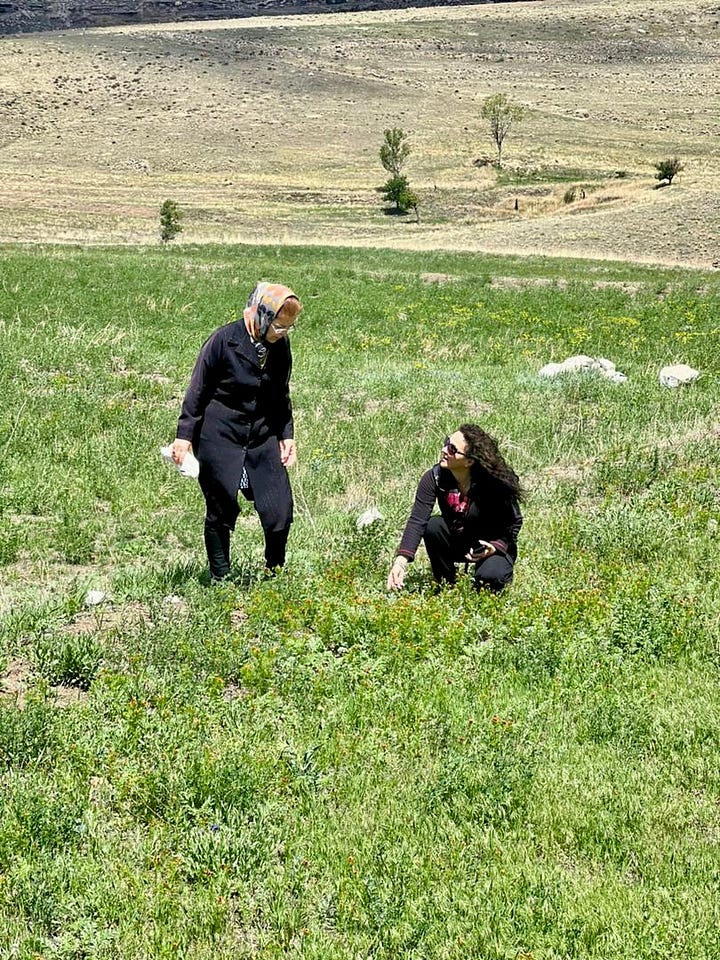
On our return, Razieyeh Khanum used some of the thyme we collected to make a fluorescent coloured thyme tea. We also ate the piovar with bread and cheese and some Tragopogon or salsify, probably the bakhtiaricus variety with a yellow flower we call shinji, yemaliyh or yelmih throughout the region.
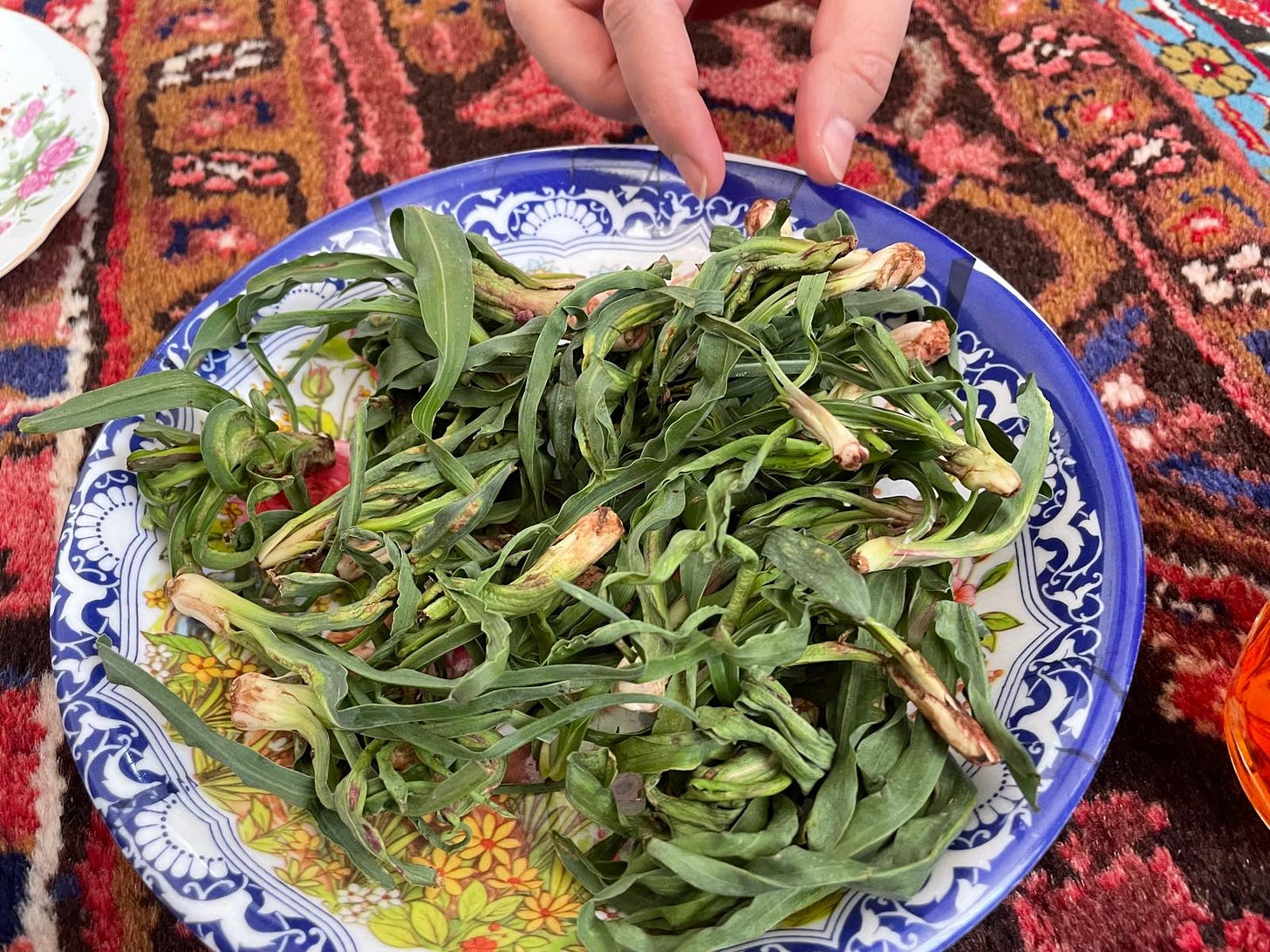
We left early in the evening, with arms full of mountain herbs and a massive jar of Razieyeh Khanum's rose petal jam or jul murabasi.
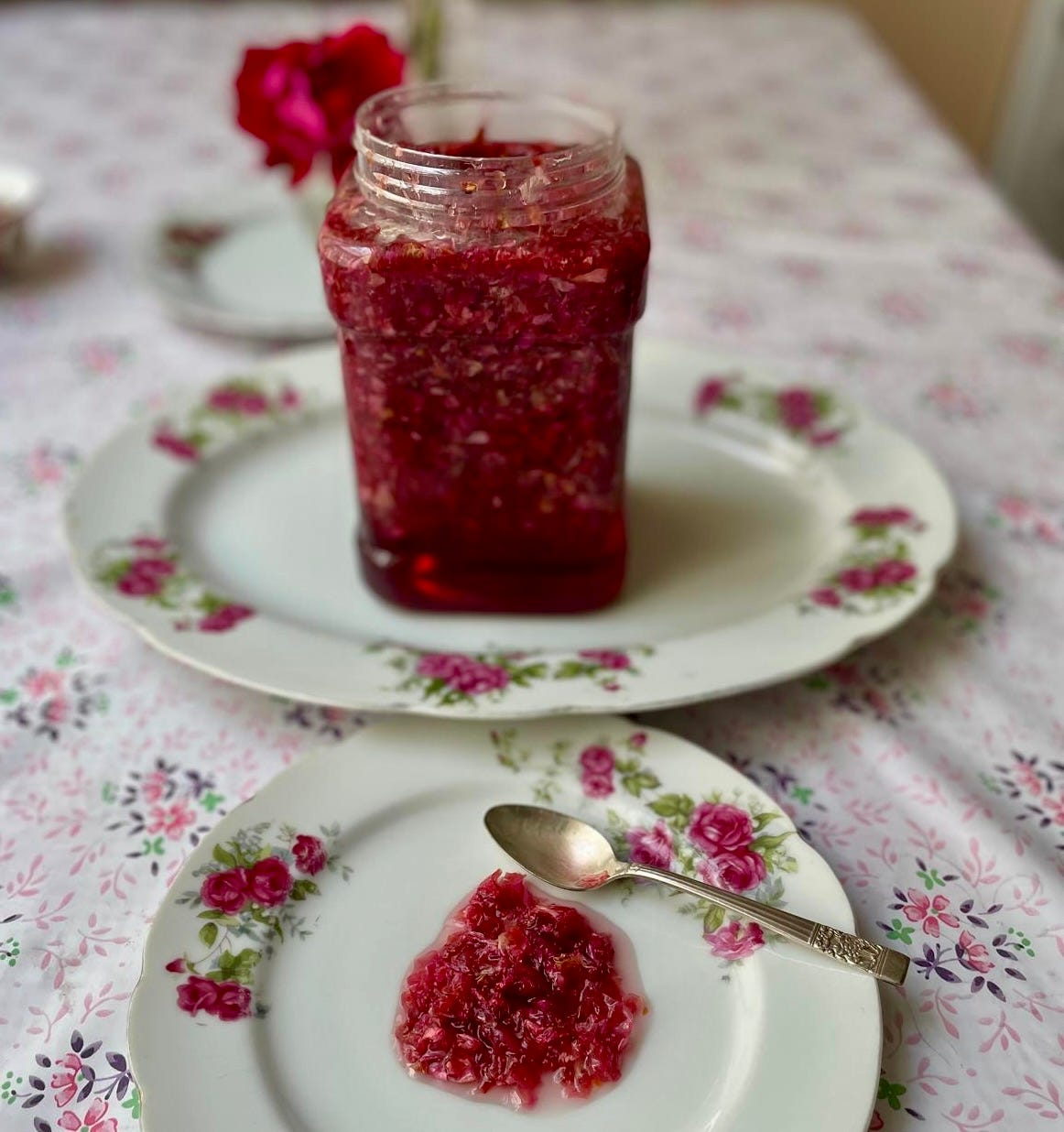
The journey was uneventful until we arrived at the western edge of Tabriz. It then took us two hours to cover 3 miles. It seemed the whole of Tabriz was out, dancing and celebrating Traxtor becoming champions. We joined in by playing this year’s theme song, dancing in the car, honking the horn and Orhan got to wave his flag.
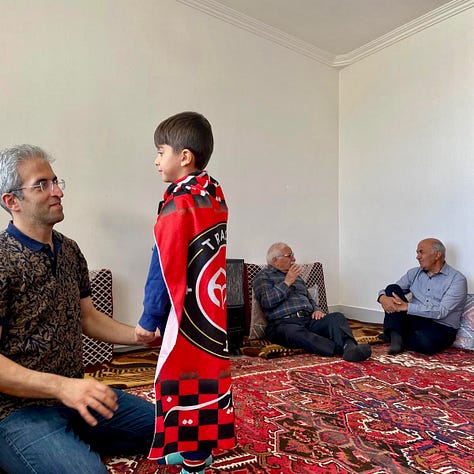

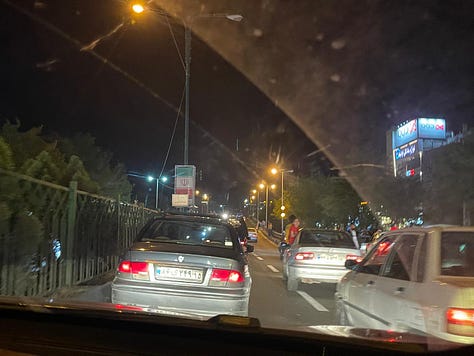
Altogether a very memorable day for football fan food researcher.





Another fascinating food story in a most beautiful environment. Thank you Simi.